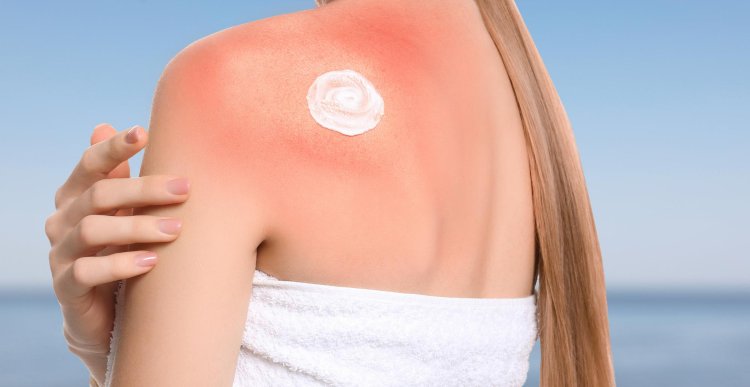Protect Your Skin: The Sunburn Prevention Guide
Sunburns are a common yet often underestimated skin condition caused by overexposure to ultraviolet (UV) radiation, predominantly from the sun. While many view sunburns as temporary discomforts, they can have significant short-term and long-term effects on skin health.

Causes of Sunburns
Sunburns occur when the skin absorbs more UV radiation than it can defend against. UV radiation is categorized into three types: UVA, UVB, and UVC. UVA and UVB rays penetrate the Earth's atmosphere and are primarily responsible for sunburns and skin damage. UVB rays affect the outer layer of skin (epidermis) and are more likely to cause sunburns, while UVA rays penetrate deeper into the skin, contributing to premature aging and skin cancer.
Symptoms of Sunburns
The symptoms of sunburn can range from mild to severe depending on the extent of UV exposure:
Mild Sunburn:
- Pinkness or redness of the skin
- Warmth and tenderness to the touch
- Minor swelling
- Itching during the healing process
Moderate to Severe Sunburn:
- Intense redness that may turn into painful, reddened skin
- Formation of blisters, which may break and cause peeling
- Severe pain and discomfort
- Headache, fever, and nausea in extreme cases
- Dehydration due to fluid loss through damaged skin
Long-term Effects
Repeated episodes of sunburn, especially severe ones, can lead to lasting consequences:
Skin Cancer:
The most serious long-term risk associated with sunburns is skin cancer, including melanoma, basal cell carcinoma, and squamous cell carcinoma. UV radiation damages the DNA in skin cells, increasing the likelihood of malignant transformations.
Premature Aging:
UV exposure accelerates the aging process of the skin, leading to wrinkles, fine lines, age spots (lentigines), and a loss of elasticity.
Eye Damage:
Prolonged exposure to UV radiation can contribute to various eye conditions, such as cataracts, macular degeneration, and photokeratitis (sunburn of the cornea).
Prevention
Preventing sunburns is key to maintaining healthy skin and reducing the risk of associated health problems:
Sunscreen:
Apply a broad-spectrum sunscreen with an SPF (sun protection factor) of at least 30, even on cloudy days. Reapply every two hours or more frequently if swimming or sweating.
Seek Shade:
Limit direct sun exposure, especially during peak UV hours between 10 a.m. and 4 p.m. Seek shade under trees, umbrellas, or awnings when outdoors.
Protective Clothing:
Wear lightweight, long-sleeved shirts, pants, wide-brimmed hats, and sunglasses with UV protection to shield skin and eyes from UV rays.
Avoid Reflective Surfaces:
Water, sand, snow, and concrete can reflect UV radiation and increase exposure. Take extra precautions when near these surfaces.
Treatment
If sunburn occurs despite precautions, prompt treatment can alleviate discomfort and aid healing:
Cool Compresses:
Apply cool, damp cloths to affected areas or take cool baths to soothe overheated skin and reduce inflammation.
Hydration:
Drink plenty of water and fluids to replace lost moisture and prevent dehydration caused by sunburn.
Topical Treatments:
Apply soothing lotions or gels containing aloe vera or hydrocortisone to moisturize and calm the skin. Avoid petroleum-based products, which can trap heat and exacerbate discomfort.
Pain Relief:
Over-the-counter pain relievers such as ibuprofen or acetaminophen can help reduce pain, swelling, and inflammation associated with sunburns.
Avoid Further UV Exposure:
Protect sunburned skin from additional UV exposure until it has healed completely to prevent further damage and discomfort.
In conclusion, sunburns are preventable injuries that require awareness, precautionary measures, and prompt treatment if they occur. By understanding the causes, recognizing the symptoms, adopting preventive strategies, and knowing how to effectively manage sunburns, individuals can enjoy outdoor activities safely while safeguarding their skin health in the long term. Prioritizing sun protection not only prevents short-term discomfort but also reduces the risk of serious health conditions, emphasizing the importance of sun safety for overall well-being.
Disclaimer: The information provided in this article is for educational purposes only and should not be considered medical advice. If you have any health concerns or are experiencing symptoms, it is important to consult with a healthcare professional, such as a doctor or clinic, for proper diagnosis and treatment. Always seek the advice of your doctor or other qualified health provider with any questions you may have regarding a medical condition. Do not disregard professional medical advice or delay in seeking it because of something you have read in this article.
Hashtags: #SunburnPrevention #SkinCare #UVProtection #HealthySkin #SunSafety
What's Your Reaction?





















